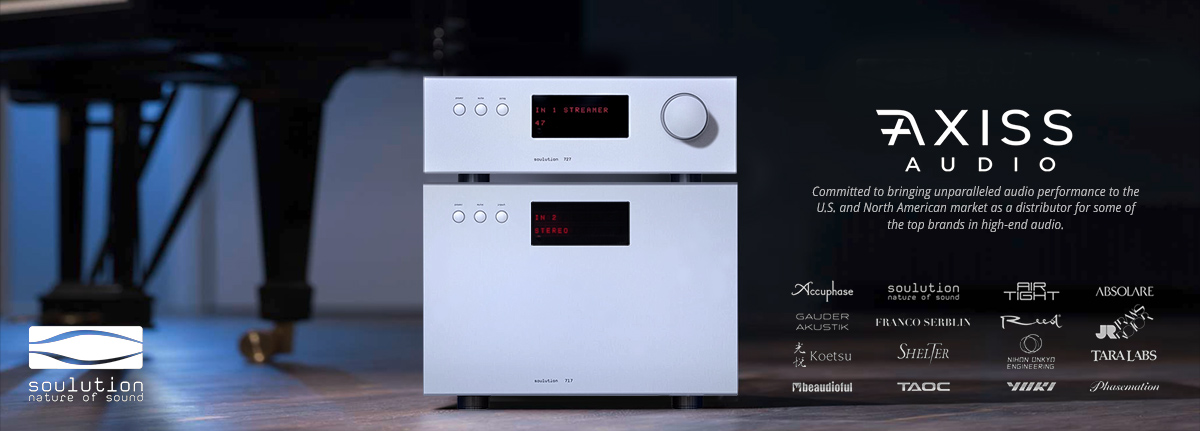I would love to know how someone copies the sound of a Mundorf silver/gold oil capacitor.
I wouldn't know either - are you of the belief that capacitors somehow add enhancement to the original signal?
I would love to know how someone copies the sound of a Mundorf silver/gold oil capacitor.
I wouldn't know either - are you of the belief that capacitors somehow add enhancement to the original signal?
There's a thread in the Tech Forum that shows this, IIRC. Been a while since I did it. Bi-amping does not provide more power, unless you use more powerful amps, just better directs the power you have.
I'll try two ways:
1. If you have a single 300 W amp then all drivers get a maximum of 300 W. If you split the signal into two bands, high and low, and use two 300 W amps, then the highs get a max of 300 W and the lows get a max of 300 W as before. Just through different signal paths.
2. Amplifiers look like voltage sources to the speakers. (I'll ignore esoteric design configurations.) The power into a resistive load is P = V^2 / R. A 300 W amp can deliver a certain maximum voltage and thus a certain maximum power (if it has enough current drive ability). If you use two 300 W amps, then the maximum voltage has not changed, and you do not get more power into a given R load. The only way to increase the power is to use a higher-power amp that has more voltage swing.
In practice you might realize a hair more power at clipping if say the LF signal is at clipping and the HF are not since they are usually much lower in amplitude; then when the LF amp clips the HF amp does not. The benefit is minor at best (I would say insignificant in the real world).
HTH - Don
p.s. For me it's a no-brainer if I am not pulling the speaker crossover out: a pair of 600 W mono amps provides 3 dB headroom compared to a pair of 300 W amps on each side.
IMO, the biggest benefit from bi-amping occurs from using an external line-level crossover and connecting the amplifier outputs straight to the drivers, no crossovers in the speaker box. That allows the amplifiers to control the drivers directly, and the crossover allows you to precisely set the crossover frequencies, gain, phase, delay etc. to optimize the speaker's output.
I'm afraid I'll stick with what Nelson Pass says on this no matter what the Tech Forum says: "Higher power. Typically two amplifiers driving a speaker with an electronic crossover will deliver peak wattages almost 4 times the peak (8 times the rms) wattage rating of a single amplifier of the same power rating. This is because the voltage waveforms coming of the high and low pass filters are not mixed, and the high pass voltage does not ride on top of the low pass voltages. When the waveform of a low frequency approaches the limit of the
amplifier, there is no voltage left over for the high frequency. With an electronic crossover, the available voltage is nearly doubled, and power is quadrupled."
Like Gary I also have a Pass Labs XVR-1-3 (3way). For those bi or tri-amping, you're unlikely to get a decent soundstage without electrically balancing all the outputs (Use a function generator and DMM). There is no way I can come remotely close to DMM-matched results adjusting by ear although maybe you might get lucky. Duelund Cast are the best passive parts rivaling the transparency of an active crossover but they are a bear to break in if you have higher parts values. I used a cable cooker!
It does not change the fact that bi-amping does not add more power, which is what I said, but does mean there may be more usable power, as Nelson Pass said. As we both imply, and was stated by others, it depends upon how much power is normally required. If you normally only use a few watts, as is pretty common, then bi-amping will not help; it only adds headroom at clipping, and the benefit very much depends upon the source material and crossover point in addition to the usual caveats (power required to deliver desired SPL at the listening position, a function of room size, speakers, etc.)
Read the Pass Labs XVR-1 manual. It's not just about headroom and power. Very insightful for some for the benefits of bi-amping even if, yes, the peak and RMS power is backwards. http://passlabs.com/manuals/
Rod Elliott's site is also useful for those wanting to learn more or even build something. http://sound.westhost.com/bi-amp.htm
Great but honestly, I don't think I ill mess with the 800D and try to put active crossover by opening the base!
I am not qualified to do so and would worry to do more harm than good, so the question still remain with passive crossover like in the B&W 800Diamond is it worth bi-amping or should I just use a single amp!
Wes,
If you don't wish to open the crossover on your 800's, then this would be an excellent alternative:
http://bryston.com/products/power_amps/28BSST-2.html
Lee
You are a wise man. It seems that the answer to your question will depend a lot on the amplifiers you are considering and the sound levels you usually listen. Also, as you currently already have one excellent amplifier, I can imagine that there will be also some economic aspects to consider.
| Steve Williams Site Founder | Site Owner | Administrator | Ron Resnick Site Owner | Administrator | Julian (The Fixer) Website Build | Marketing Managersing |
















